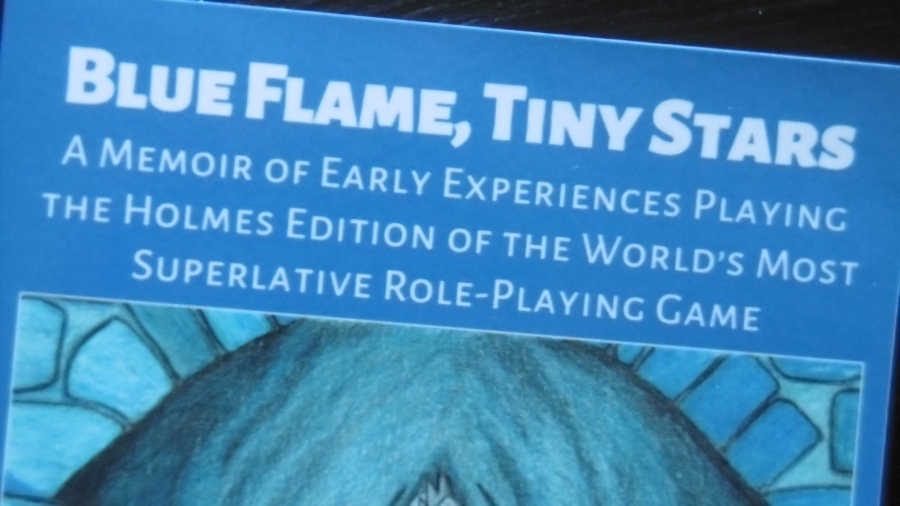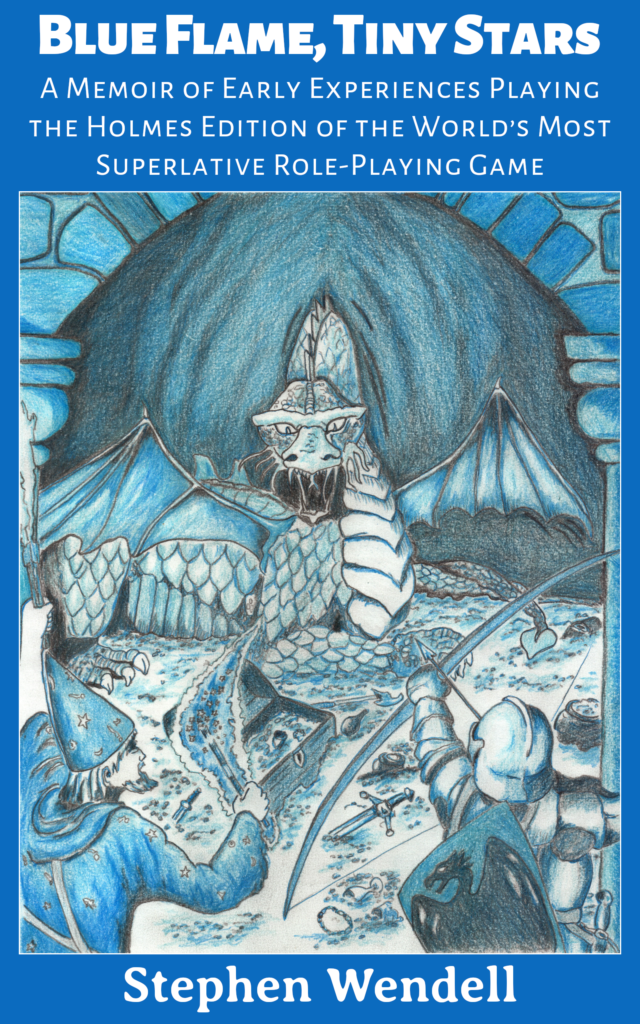Critical Hits and Misses
This is the 15th in a continuing series of articles, which reedits house rules for Holmes Basic D&D from 40-year-old game club newsletters. Mentions of house rules are in bold text and followed by a [bracketed category designator].
For rules category descriptions and more about the newsletters, see “About the Reedition of Phenster’s.” For an index of articles, see Coming Up in “Pandemonium Society House Rules.”
Phenster’s Pandemonium Society House Rules is a work of fiction. Names, characters, businesses, events, incidents, and newsletters are either products of the author’s imagination or are used in a fictitious manner. Any resemblance to actual persons, living or dead, or actual events is pure coincidence.
Beowulf the Bully charged the last bugbear. He rolled a natural 1 with his two-handed sword, so he missed. Hazard said he stumbled in the charge. He would miss his next attack while he recovered his balance, and the bugbear got to attack him from the flank. The bugbear rolled a 20! That's double-max damage!! The Bully fell dead on the floor with a mace in his face.[1]
—Phenster, from “At the Gates of Pandemonium,” Paradigm Lost #4 (December 1982)
Natural Hits and Misses [E]
A natural 20 always hits; a natural 1 always misses.
Following D&D editions in chronological order, I don’t find this rule in its full form (including both hits and misses) until Molday’s Basic D&D (1981): “…a roll of 20 will always hit, and a roll of 1 will always miss” (B25). We can’t have crits and fumbles without it, so we assume the house rule.
Critical Hits
Critical Hits: Double-Max Damage [P]
On a natural 20, an attack roll automatically hits and does double maximum damage.
Apart from twice maximum damage being a lot, the beauty of this option is that the big moment when the dice comes up 20 is the BIG moment. It happens in an instant. There is no second guessing: “Yeah, well, we’ll see if you confirm…” And no doubling a low damage roll. Because rolled damage, even doubled, is often a let down.
Phenster does not mention whether a Strength or magic bonus is included in the doubling. I would say not: assuming the natural 20 represents an optimal blow, the attacker’s strength is not suddenly doubled, nor does a magic weapon’s power surge.
Critical Hits: Max damage [E]
On a natural 20, an attack roll automatically hits, inflicting maximum damage.
For those who balk at double-max, simple maximum damage also has the benefit of immediacy, while being less likely to end an adventuring career.
Critical Misses
When you roll a 1 for your attack blow, we usually say you drop your weapon and have to draw another one, but it depends on who's the DM. It gets a little boring if it happens more than a couple times in one game. But Hazard has a flair for making stuff up on the spot. Like, you stumble, or your flail gets stuck in the other guy's shield, or something more dramatic. We almost always miss our next turn.
I've tried it before when I'm the DM, but it takes me too long to make something up. So I made a list of all the things Hazard ever did. It turned out that the list wasn't long. It's the details Hazard adds that make the flair. I keep the list handy, and if somebody rolls a 1, I just have to pick something from the list and add some flair.
- Drops weapon
- Weapon stuck
- Breaks weapon
- Over swing (off balance)
- Stumble (off balance, 1 step in random direction)
- Expose flank
- Impaired (penalty on attack OR armor class for 1 round)
—Phenster, from “Combat Complications,” L’avant garde #49 (September 1982)
Critical Miss: Lose Next Action [E]
On a natural 1, an attack roll automatically misses, and the attacker loses the next attack or the next round of action.
I include “next attack” for the case of combatants wielding a lighter weapon and fighters with multiple attacks per round (see Multiple Attacks per Round [E] and “Combat Complications” forthcoming).
Using Phenster’s list, the DM may add details as necessity demands and one’s capability for flair permits.
Critical Miss Immunity [E]
An attacker, who needs a 10 or less on the attack matrix (level/hit dice vs AC), is immune to a critical miss.
My own addition, this rule lowers the chance that a high-level character looks like a bumbling idiot. It takes into account only the attacker’s level versus the defender’s AC. I don’t include bonuses and penalties in the criteria, because often, when the attack roll is high or low, we don’t take the time to add up all bonuses and penalties. By including them in the calculation for critical miss immunity, it forces us to make that calculation, which slows the pace.
Note on Critical Hits and Misses
Statisticians and game designers criticize critical hits and misses for a variety of good reasons. Here I outline the major arguments briefly. The web is mired with more thorough discussion on the topic.2
The base rule is that a 20 always hits and a 1 always misses. Adding additional penalties and bonuses introduces more randomness—therefore more chaos—into combat.
Statisticians warn players that critical hits and misses work against their characters in a number of ways:
- If we suppose that player characters should have a chance—whether high or low—to win a given fight, then any additional chaos in the system means it’s more difficult to gauge the chance of success.
- Because there are often more individual monsters than PCs, the latter are more likely to receive critical hits than to deliver them.
- As fighters advance in level, they get more attacks per round. More attack rolls means a higher-level fighter has more chances to fumble than a lower-level fighter. This works against the game’s basic tenet that characters become more competent as they gain experience.
Game designers agree with the statisticians on the points above. They also balk at additional dice rolls and table lookups. All that takes time, not to mention the dramatic tension is more often broken than held taught.
Most of the statisticians and game designers who make these arguments are adults. In my youth, my friends and I gave little thought to such complicated concerns. The chance to have a dramatic impact on combat far outweighed the chance of bad stuff happening to a beloved player character—if only in our risk-ignorant adolescent minds.
1 To assuage Beowulf’s fans: Phenster tells us later that the party had him raised at the the fortress chapel. Afterward, “Friar Tombs healed his face, but the wound left scars.”
2 In the old school, generally, we talk about critical hits and misses, or casually: crits and fumbles. In later editions, when we start rolling skill checks on a d20, the terms become critical success and critical failure. Adjust search keywords accordingly.

